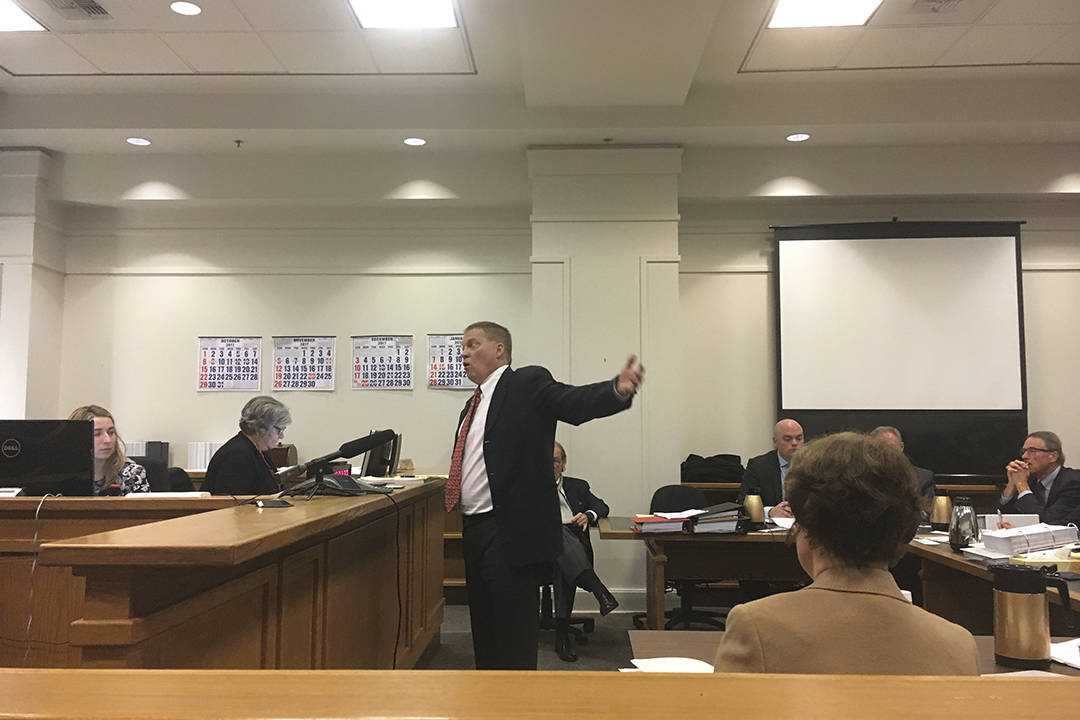One a day: It’s not just a vitamin company anymore. It’s the rate at which Seattle-area homes are being torn down for replacement by new homes, according to The Seattle Times.
This trend has plenty of policy implications, but for most people, the biggest impact of this building boom is aesthetic: It’s simply changing the way Seattle neighborhoods look.
Robert Hutchison thinks more about demolition than most architects. Blurring the line between art and architecture, Hutchison in recent years has overseen several installations in old buildings, many of which are about to be torn down, that in various ways seek to honor the memory of the lives lived within them. Yet he’s no throwback. His new homes are boldly contemporary. In honor of his work, Hutchison was one of three recipients of the 2016–17 Rome Prize, awarded by the American Academy in Rome, and will spend seven months in the Italian capital continuing his study of honoring the old and discovering the new.
We met with Hutchison in his sleek office—tucked behind his classic Fremont Craftsman—to talk about his, and Seattle’s, dual architectural personality.
The Times reported that there’s a house being torn down every day. Are we getting to the point where the look of Seattle is no longer just Craftsmans? Yeah, I definitely think so because of some of the architects working in the city putting up good work. Good friends of mine are doing really beautiful work that just has this timeless contemporary quality to it. Since there’s a lot of that kind of work starting to happen in Seattle, maybe people are starting to associate Seattle more with that contemporary appeal.
Some angst comes along with that. We know that there’s angst.
Where does that come from? Is it resistance to change? Part of it is that. It’s a little bit of a Seattle think. The whole conversation about [the Housing Affordability and Livability Agenda] and all of that stuff. We’re in the hotbed of people who are up in arms about that stuff, and I think a lot of it is that people are very comfortable with the status quo and don’t want to change it. Whereas my wife and I are like, if we could get our property to be zoned low-rise, we would make some changes big-time because we’re all about density. This [contemporary office] is a good example. We were not in any way apologetic or interested in trying to mimic our [Craftsman] house, which we love. This was a very pragmatic exercise in trying to make as much space as possible.
Given all the building, how do you think architects are doing overall, shaping this new landscape? I would argue that we don’t have much of a say in things as we’d like to and should have. I don’t mean this in a bad way, but developers have more of a say in what’s happening in this city because they’re the ones who are funding it, for better or for worse. I don’t think that always means a bad thing; there are actually some really great developers. But I think, particularly, housing is an issue. It doesn’t help that a lot of this stuff being built is not very high-quality or not very well-designed. I would argue it’s not really being designed much by architects. We’re interested in trying to counter that.
Along with designing new homes, you do installations in old buildings. How does that work? These projects always deal with these spaces that are in flux—a lot of times there are buildings that are going to be demolished or abandoned, or they’re spaces that used to have buildings, but they’re always dealing with this moment in between, these spaces in between. I did a pretty intensive installation project in Mexico City last year [Lineamientos], and that picked up on a lot of previous installation projects and helped clarify exactly what I was doing. We got to do a house of our choosing, a house that was going to be demolished for future development. What we became intrigued with was that there were these shadows on the wall everywhere throughout the house, and they were left over from 50 years of this family’s belongs hanging on the wall—paintings and everything. They were just everywhere, these ghosted shadows, so what we decided to do was to create a drawing project that collected all of these shapes and redrew them in the central stair hall of the house. It was open for a weekend and then it got demolished.
Is this a comment on demolition? In some cases, literally, demolition is a part of it. But in some other cases I think memory is actually important to these buildings more so than the act of demolition, if you will. [Lineamientos] was all about the memory of the previous inhabitants.
dperson@seattleweekly.com
This conversation has been edited
for length and clarity.








